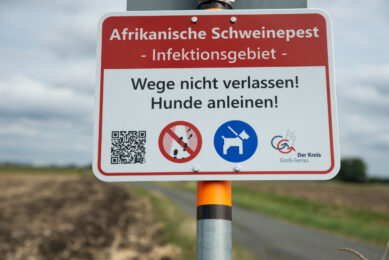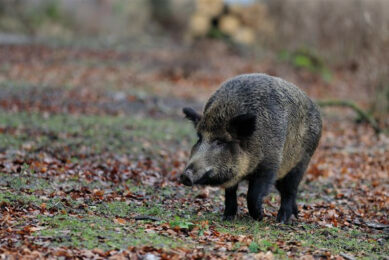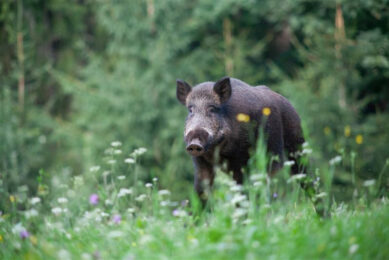ASF Germany: NRW builds fence as infected boar count rises to 36

The authorities in Germany’s state North Rhine Westphalia (NRW) have started constructing a fence around the infected area in the districts of Olpe and Siegen-Wittgenstein. In the meantime, the number of infected wild boar in the state keeps rising – according to the latest figures the count is at 36.
As from today, the German animal disease database TSIS speaks of 36 cases in the area – up from 26 last week. Virtually the same amount (35) is now communicated by the NRW state Office for Food and Consumer Protection (LAVE). In that update, all new cases have been found in the Olpe district, where also the initial animals were found in NRW. Only 3 cases so far have been found in Siegen-Wittgenstein.
The first outbreaks in North Rhine Westphalia state emerged in June. As tests were carried out, it turned out the ASF virus variant resembled ones observed previously in Calabria in southern Italy. Therefore it looks unlikely that the outbreaks are related to ongoing ASF infections in an area around Frankfurt-am-Main, about 100 km more to the south. Close to the border with Poland, in Eastern Germany, ASF has been circulating for various years already.
North Rhine Westphalia is the most populous state in Germany, with large cities like Düsseldorf, Cologne, Dortmund and Essen. It is also home to a substantial proportion of Germany’s swine industry.
Construction of fence to prevent wild boar migration
In the meantime, the construction of fences has begun around the inner zone (restricted zone II). The idea is to prevent wild boar to migrate out of the region. The construction includes both mobile fences as well as permanent fences. A spokeswoman for the NRW ministry of agriculture was quoted to say, “Calmness and care take precedence over speed here, because the wild boar should stay put and not be pushed away.”
The responsible local districts will decide where the fences will be built. They have spoken with epidemiologists, wildlife biologists, carcass testing experts and the hunting ground owners to determine possible routes for wild boar. She continued to say, “Here, again, the top priority is not to disturb the animals and to keep them in place. The fences are designed to guide them.”
As there is hardly any agricultural land in the heart of the affected region, the wild boar are not lured away by more attractive feeding alternatives. In any case, they have been fed intensively since the first discovery in the centre of restricted zone II – to encourage the animals not to migrate. Carcass testing is carried out discretely so as not to disturb the wild boar population.
Domestic pig farming in the ASF affected areas
Domestic pig farming in the restricted area II (the inner zone) is relatively small scale, wrote Germany’s leading agricultural title Top Agrar. Quoring figures of the NRW state Office for Food and Consumer Protection (LAVE), in restricted zone II there are 54 farms keeping 6,554 pigs. The vast majority of those pigs (6,179 pigs) are kept on just 5 farms. In the outer zone (buffer zone, restricted zone I), many more pigs are being held – on 94 farms with a total of 16,181 pigs. In the buffer zone, there are 5 farms with more than 700 pigs on-site.











